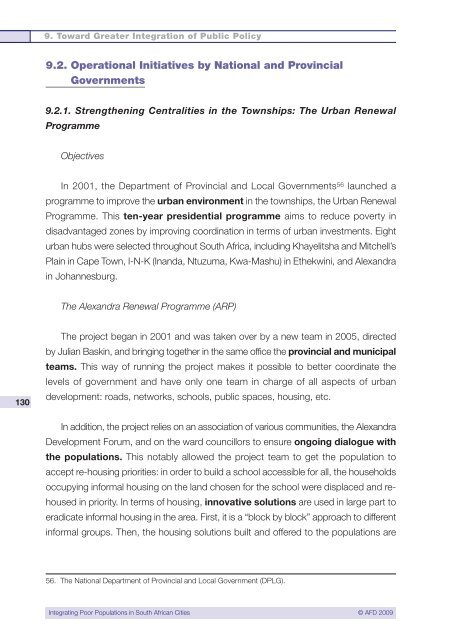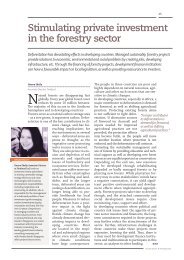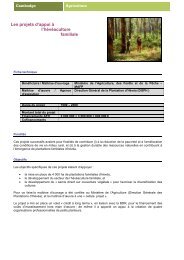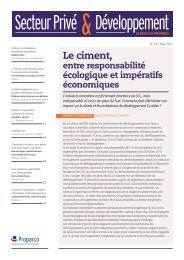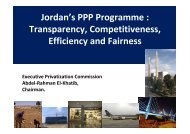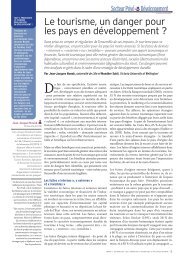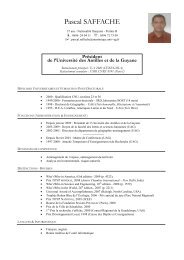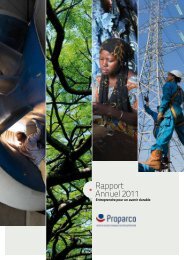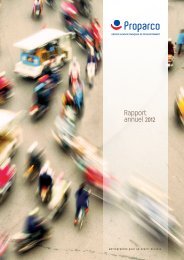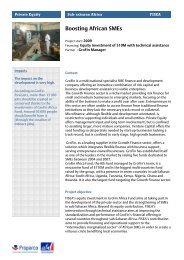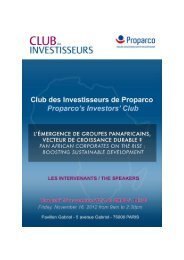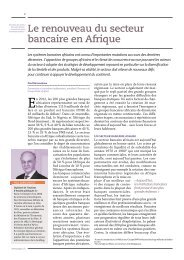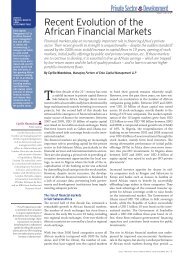Integrating Poor Populations in South African Cities - Agence ...
Integrating Poor Populations in South African Cities - Agence ...
Integrating Poor Populations in South African Cities - Agence ...
Create successful ePaper yourself
Turn your PDF publications into a flip-book with our unique Google optimized e-Paper software.
9. Toward Greater Integration of Public Policy<br />
9.2. Operational Initiatives by National and Prov<strong>in</strong>cial<br />
Governments<br />
9.2.1. Strengthen<strong>in</strong>g Centralities <strong>in</strong> the Townships: The Urban Renewal<br />
Programme<br />
Objectives<br />
In 2001, the Department of Prov<strong>in</strong>cial and Local Governments 56 launched a<br />
programme to improve the urban environment <strong>in</strong> the townships, the Urban Renewal<br />
Programme. This ten-year presidential programme aims to reduce poverty <strong>in</strong><br />
disadvantaged zones by improv<strong>in</strong>g coord<strong>in</strong>ation <strong>in</strong> terms of urban <strong>in</strong>vestments. Eight<br />
urban hubs were selected throughout <strong>South</strong> Africa, <strong>in</strong>clud<strong>in</strong>g Khayelitsha and Mitchell’s<br />
Pla<strong>in</strong> <strong>in</strong> Cape Town, I-N-K (Inanda, Ntuzuma, Kwa-Mashu) <strong>in</strong> Ethekw<strong>in</strong>i, and Alexandra<br />
<strong>in</strong> Johannesburg.<br />
The Alexandra Renewal Programme (ARP)<br />
130<br />
The project began <strong>in</strong> 2001 and was taken over by a new team <strong>in</strong> 2005, directed<br />
by Julian Bask<strong>in</strong>, and br<strong>in</strong>g<strong>in</strong>g together <strong>in</strong> the same office the prov<strong>in</strong>cial and municipal<br />
teams. This way of runn<strong>in</strong>g the project makes it possible to better coord<strong>in</strong>ate the<br />
levels of government and have only one team <strong>in</strong> charge of all aspects of urban<br />
development: roads, networks, schools, public spaces, hous<strong>in</strong>g, etc.<br />
In addition, the project relies on an association of various communities, the Alexandra<br />
Development Forum, and on the ward councillors to ensure ongo<strong>in</strong>g dialogue with<br />
the populations. This notably allowed the project team to get the population to<br />
accept re-hous<strong>in</strong>g priorities: <strong>in</strong> order to build a school accessible for all, the households<br />
occupy<strong>in</strong>g <strong>in</strong>formal hous<strong>in</strong>g on the land chosen for the school were displaced and rehoused<br />
<strong>in</strong> priority. In terms of hous<strong>in</strong>g, <strong>in</strong>novative solutions are used <strong>in</strong> large part to<br />
eradicate <strong>in</strong>formal hous<strong>in</strong>g <strong>in</strong> the area. First, it is a “block by block” approach to different<br />
<strong>in</strong>formal groups. Then, the hous<strong>in</strong>g solutions built and offered to the populations are<br />
56. The National Department of Prov<strong>in</strong>cial and Local Government (DPLG).<br />
<strong>Integrat<strong>in</strong>g</strong> <strong>Poor</strong> <strong>Populations</strong> <strong>in</strong> <strong>South</strong> <strong>African</strong> <strong>Cities</strong> © AFD 2009


